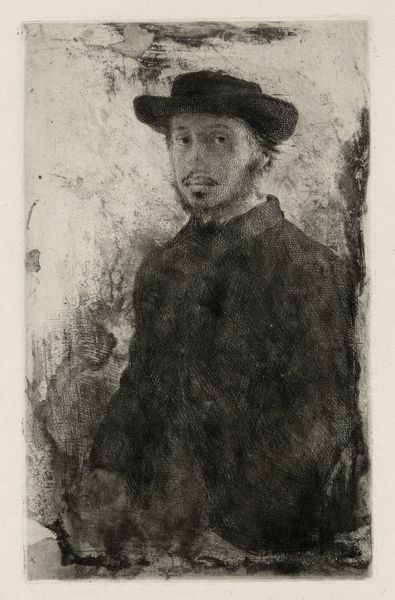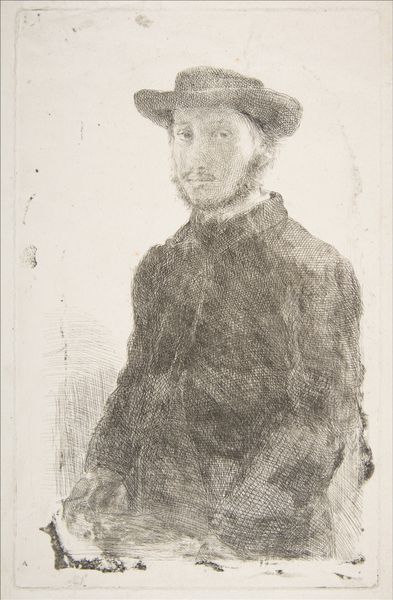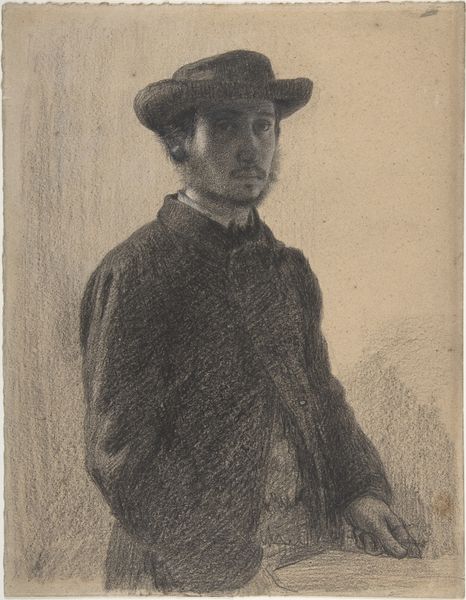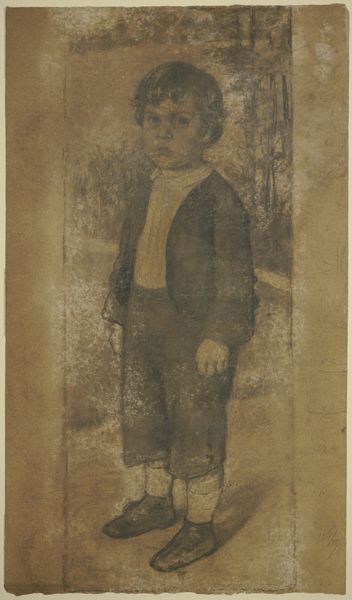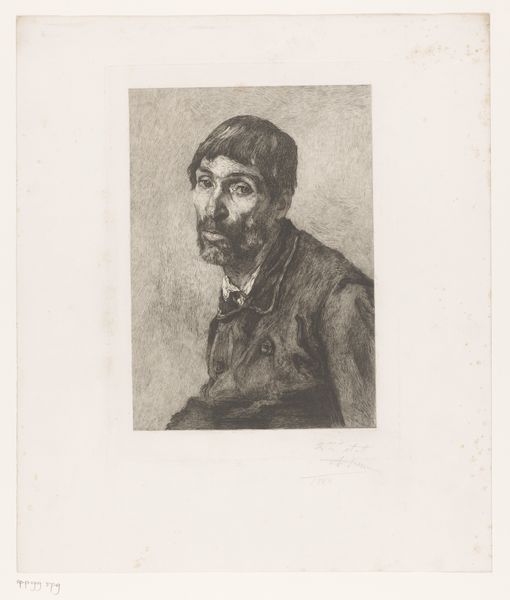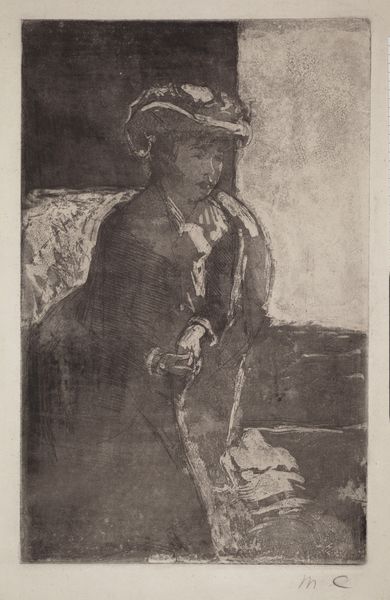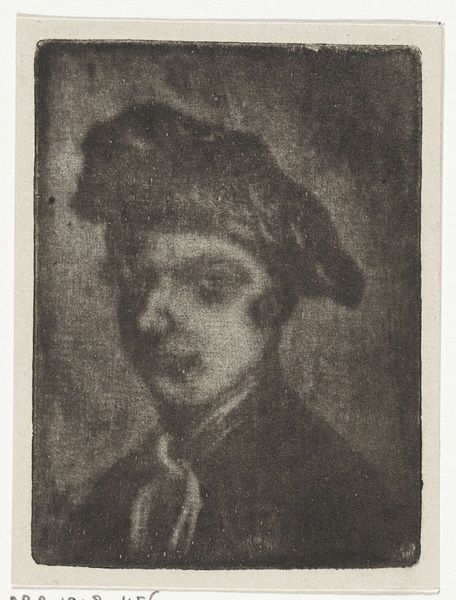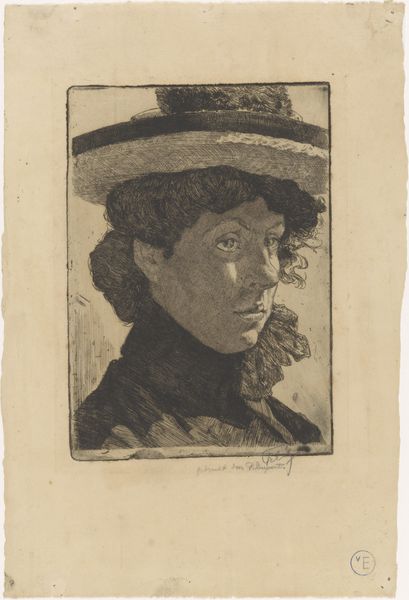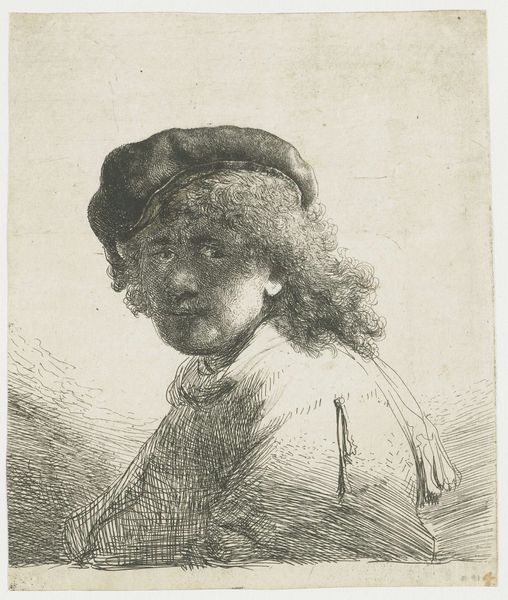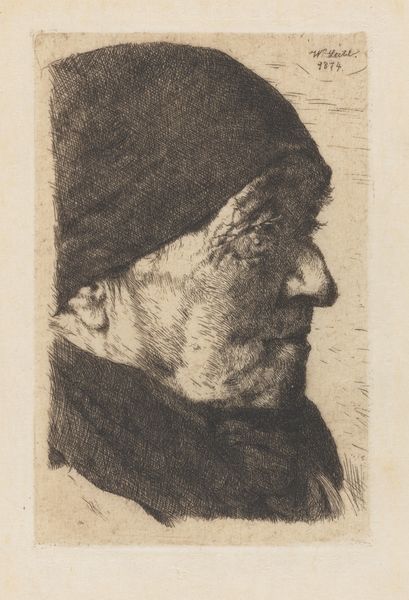
drawing, print, etching, dry-media, charcoal
#
portrait
#
drawing
#
self-portrait
# print
#
etching
#
charcoal drawing
#
dry-media
#
pencil drawing
#
charcoal
#
charcoal
Dimensions: plate: 9 1/16 x 5 11/16 in. (23 x 14.4 cm) sheet: 13 3/4 x 10 1/8 in. (34.9 x 25.7 cm)
Copyright: Public Domain
Editor: Here we have Degas’ Self-Portrait from 1857, created with etching. The print has this hazy, almost ghostly quality that I find pretty compelling. What do you see in this work? Curator: Let's think about the materiality of this etching. Degas, often associated with painting and pastels, chose the medium of printmaking. Etching allowed for reproducibility, potentially circulating his image amongst a wider audience. How does this choice of material and method affect our understanding of Degas’ self-representation and his status as an artist in the 19th century? Editor: That’s a really interesting point about the choice of etching democratizing the image. Does the technique itself - the lines and the hazy textures - communicate something different than, say, if he had painted himself? Curator: Absolutely. The lines in the etching, created through acid biting into the metal plate, become a sort of index of labor. Look at the densely worked areas – they speak to the repetitive, almost mechanical process involved. It highlights not just *who* he is portraying, but *how* this portrait was manufactured, blurring the line between fine art and reproductive craft. Were prints considered of lower status than paintings? Editor: I think there was definitely a hierarchy, paintings were seen as more 'original.' So, by choosing etching, was Degas maybe making a statement about the value we place on originality and artistic labor? Curator: Precisely! He's engaging with a dialogue around artistic production itself. What does it mean to create art in a world increasingly shaped by mass production and distribution? What I found really rewarding about considering the means of production is that now I feel like I have a whole new level of respect for it. Editor: Me too, it’s definitely a perspective that will shift how I see art.
Comments
No comments
Be the first to comment and join the conversation on the ultimate creative platform.
